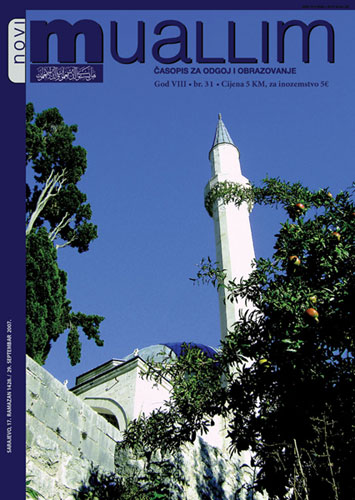METAPHYSICAL PARADIGM IN THE SACRED ARCHITECTURE OF ISLAM
DOI:
https://doi.org/10.26340/muallim.v8i31.1009Abstract
Architecture of the sacred in Islam is in its most superior form significantly connected to the metaphysical teachings of Islam itself. The world of metaphysical in Islam symbolizes the world of imaginary Being (al-wujud al-dhihhni) where everything is, through the power of Eternal Divine Knowledge, given an ideal propportion and perfect harmony. A fundamental outline according to which the world is “constructed/assembled” is the heavenly Imago Templi (al-bayt al ma’mur) in which the hidden realities of all the things and beings reside (al-a’yan al-thabita). The reallization of that world and its transformation from mundus imaginalis to the mundus visibillis is most closely connected to the Divine act of Creation establishing, in the world of visible forms, the whole range of personified Divine Being or all-cosmic architecture the paradigm of which make up the 99 beautiful Names of God. Each and every one of these Names repressents, in fact, a unique cosmic temple or picture of perfection revealed by God through its act of Creation. Each and every one of these Names represents an individual mihrab where every living creature speaks softly its praises to the Only One. Human creative genius, as the most perfect being among the vast order of all of the Divine creations, must act as pursuing this act of Divine creative genius. The Truth, spiritual Virtue, Balance and Harmony must all be refleccted in its very actions. Architecture of the sacred in Islam is thus here not only to testify to this harmony seen in the correlation of the Divine and human creative actions but to testify to the perfect connnection of the Divine architectonic of the munddus imaginalis and mundus visibilis to its fullest and most perfect potential.
Downloads
Published
How to Cite
Issue
Section
License
Naknada:
a. Časopis ne naplaćuje naknadu za obradu članaka (APC) i naknadu za podnošenje članaka.
Autori koji objavljuju u ovom časopisu pristaju na sljedeće uvijete:
- Autori zadržavaju autorska prava i pružaju časopisu pravo prvog objavljivanja, pri čemu će rad jednu godinu po objavljivanju biti podložan licenci Creative Commons imenovanje koja omogućuje drugima da dijele rad uz uvijet navođenja autorstva i izvornog objavljivanja u ovom časopisu.
- Autori mogu izraditi zasebne, ugovorne aranžmane za ne-ekskluzivnu distribuciju rada objavljenog u časopisu (npr. postavljanje u institucionalni repozitorij ili objavljivanje u knjizi), uz navođenje da je rad izvorno objavljen u ovom časopisu.


